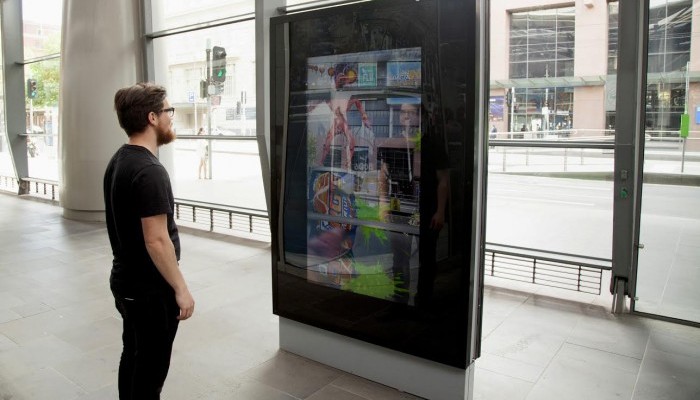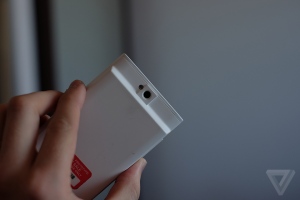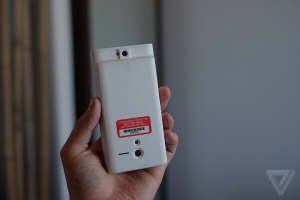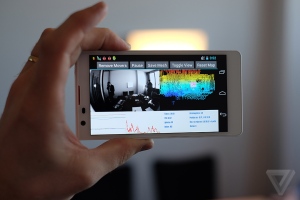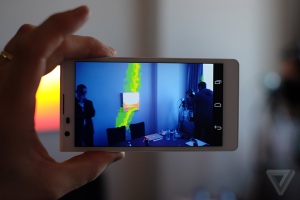Some peripheral sight may be obstructed while wearing device, researchers find
TUESDAY, Nov. 4, 2014 (HealthDay News) — Since its initial launch in 2013, Google Glass has been touted as a revolutionary entry into the world of “smart” eyewear.
The promise: a broadly expanded visual experience with on-the-move, hands-free access to photos, videos, messaging, web-surfing and apps.
The catch: a small new study suggests that the structure of the glasses (rather than the software) may curtail natural peripheral vision, creating blind spots that undermine safety while engaging in routine tasks, such as driving or walking.
“I am very pro new technology,” said Dr. Tsontcho Ianchulev, lead author of a research letter concerning Google Glass, and a clinical associate professor in the department of ophthalmology at University of California, San Francisco. “I’m an aficionado of anything new or novel, and I myself was an early adopter of Google Glass,” he added.
“But I almost got into a car accident when I was driving with it. And the device was even turned off at the time. So, that really alerted me to how much my peripheral vision seemed to be blocked by the frame,” he continued.
“What we’ve done is test the glasses in a very simple low-budget way, using standard ophthalmology to compare it to regular eyewear,” Ianchulev said. “And we found that the frame of Google Glass cuts out a portion of your vision that prevents a user from seeing things on the right side of their visual field.”
In a statement, Google Glass said the findings should not surprise users and the device remains safe.
“Put on your favorite shades, glasses, baseball hat, or hoodie, and you’ll quickly see that this study tells us what we already know; wearing something on your face or head may affect your peripheral vision,” the company said. “From the beginning, the Glass team has worked closely with a range of experts to develop a device that is safe for use, and after extensive study they have not found any safety issues when it’s used correctly.”
Ianchulev and colleagues reported their findings in the Nov. 5 issue of the Journal of the American Medical Association.
To examine the problem, the investigators outfitted three individuals with 20/20 corrected vision, and gave each an hour to become comfortable with Google Glass (per Google’s own recommendations). Then, with the software turned off, each underwent standard peripheral vision testing.
The result: when compared with regular glasses, each participant experienced a “clinically meaningful” loss of vision in their upper right quadrant, the study findings showed.
In addition, the research team conducted an analysis of 132 photos (found in a Google search online) of people wearing the device. The review revealed that the way the glasses are typically worn suggests that the risk for developing a blind spot is both real and common.
“Now, this was a very initial effort, based on just three participants and the follow-up analysis,” Ianchulev stressed. “Our goal is really just to open up a discussion and have the manufacturer address the impact in a substantial way, because we realized there was really very little on the topic.”
To that end, the study team has already shared their findings with Google. “We do think this is a fixable problem, because it’s a frame-wear issue, not a software problem,” said Ianchulev. “And this device wonderfully expands and extends some functions. At the same time, it seems to compromise a biological function. So we need to make sure the trade-off is appropriate, because you don’t want to find out about this problem in the statistics of the [Department of Motor Vehicles].”
Two additional vision experts emphasized the critical role peripheral vision plays in maintaining safe daily function.
“Most people do not recognize anything beyond the small center of the [visual] field, which is the only part that is in sharp focus,” said Dr. Alfred Sommers, a professor of ophthalmology and dean emeritus of the Bloomberg School of Public Health at Johns Hopkins University in Baltimore.
“But we often do respond to events happening in the periphery, which is not in sharp focus but might catch our attention, or not, like a car or person we would otherwise bump into,” Sommers said.
And that’s why there’s a potential problem with Google Glass, according to Mark Rosenfield, a professor at the State University of New York College of Optometry in New York City.
“This loss of peripheral vision due to the obstruction [of Google Glass frames] could be significant depending upon what the observer is doing while wearing the device,” Rosenfield said. “A subject who was driving, operating machinery or in motion could be severely, and dangerously, impacted by the visual field loss,” he said.
SOURCES: Tsontcho Ianchulev, M.D., M.P.H., clinical associate professor, department of ophthalmology, University of California, San Francisco; Alfred Sommers, M.D., professor, ophthalmology, and dean emeritus, Bloomberg School of Public Health, Johns Hopkins University, Baltimore; Mark Rosenfield, O.D., Ph.D., professor, State University of New York (SUNY) College of Optometry, New York City; Nov. 5, 2014, Journal of the American Medical Association; statement, Google Glass




